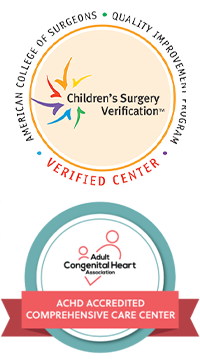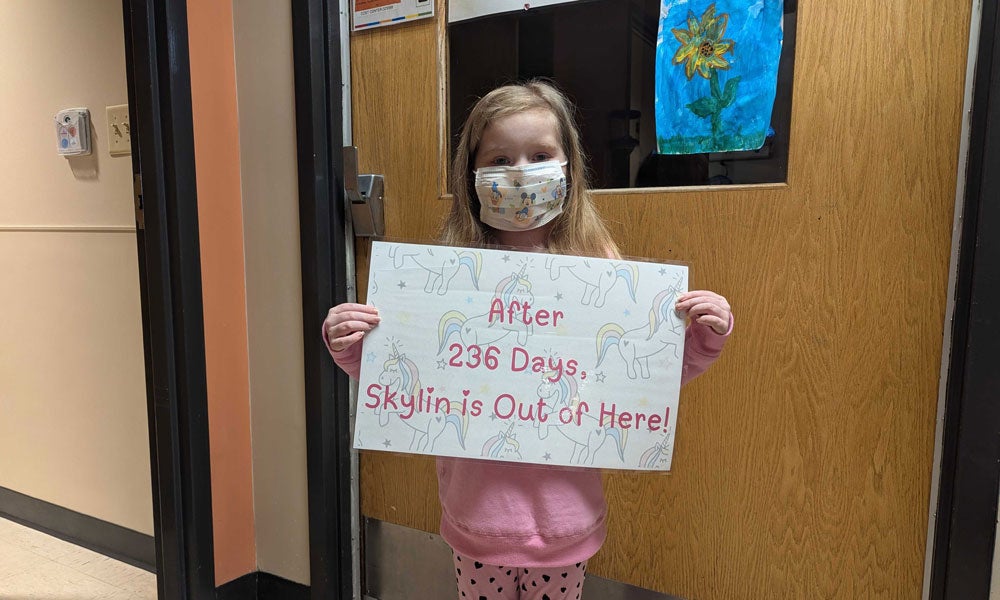Pulmonary atresia is a very rare birth defect affecting the pulmonary valve. Sometimes the pulmonary valve is missing completely; other times the valve is blocked. Normally, the pulmonary valve acts like a door that allows blood to flow from the right ventricle through the pulmonary artery to the lungs to pick up oxygen. Pulmonary atresia surgery will be needed to repair the condition.
Initial treatment of pulmonary atresia focuses on keeping the ductus arteriosus open with a medication called prostaglandins. The ductus arteriosus, a connection between the pulmonary artery and aorta, normally closes soon after birth. Keeping it open allows blood to keep blood flowing to the lungs. If the baby does not have a ventricular septal defect (VSD) or an atrial septal defect (ASD), an emergency balloon atrial septostomy will be performed. This will allow blood on the right side of the heart to get to the left side of the heart so it can be pumped out to the body.
Your child’s pediatric cardiologist may perform a cardiac catheterization. In this procedure, the cardiologist inserts a catheter — a long, thin tube — into a large vein, threads it up to the heart and injects dye to see the heart’s structures. The catheterization will allow the cardiologist to evaluate the pulmonary atresia, measure how much blood is reaching the lungs and examine the anatomy of the vessels around the heart.
Pulmonary atresia surgery will be needed to permanently create a way to get blood flow to the lungs. One option is to surgically reconstruct the right ventricular outflow tract. This can be done by opening a connection from the right ventricle to the pulmonary artery with a valved tube called a conduit, or by patching the right ventricular outflow tract. Another option is a Blalock-Taussig shunt (BT shunt), a small tube used to connect the pulmonary artery and the subclavian artery.
After pulmonary atresia surgery, the child will need to see a pediatric cardiologist regularly. The child may need future surgeries. This will depend on several factors, including right ventricle size and any other defects present. A full two-ventricle repair can be done if the right ventricle is big enough.
Another option is following the single-ventricle pathway with staged surgeries to separate the oxygenated arterial circulation from the deoxygenated venous circulation. Two more surgeries — the Glenn procedure and Fontan procedure — allow blood to flow through the lungs to pick up oxygen so that it can then be distributed throughout the body.
Norton Children’s Heart Institute is the leading provider of pediatric heart care in Louisville and Southern Indiana.
Norton Children’s Heart Institute has a network of remote diagnostic and treatment services in Kentucky and Southern Indiana.
The board-certified and fellowship-trained specialists at Norton Children’s Heart Institute can identify the best surgical options for your child with pulmonary atresia.
Why Choose Norton Children’s Heart Institute
- Norton Children’s Hospital has been a pioneer in pediatric cardiothoracic surgery, performing Kentucky’s first pediatric heart transplant in 1986 and becoming the second site in the United States to perform an infant heart transplant.
- The American Board of Thoracic Surgery has certified our cardiothoracic surgeons in congenital heart surgery.
- The Adult Congenital Heart Association has accredited Norton Children’s Heart Adult Congenital Heart Disease Program as the first comprehensive care center in Kentucky and Indiana treating adults born with a heart defect.
- More than 17,000 children a year visit Norton Children’s Heart Institute for advanced heart care.
- Norton Children’s Heart Institute has offices across Kentucky and Southern Indiana to bring quality pediatric heart care closer to home.
- The Jennifer Lawrence Cardiac Intensive Care Unit (CICU) at Norton Children’s Hospital is the largest dedicated CICU in Kentucky, equipped with 17 private rooms and the newest technology available for heart care.




